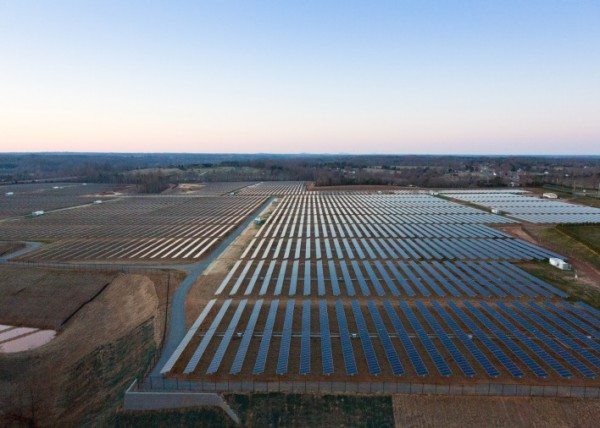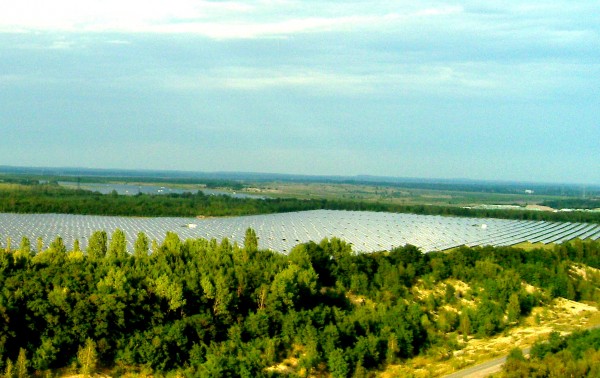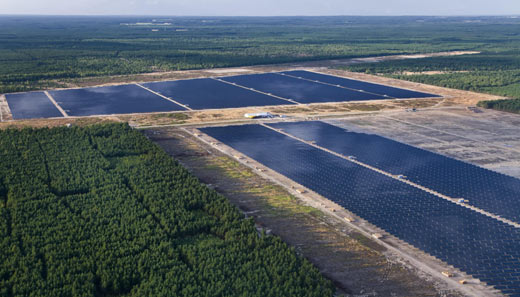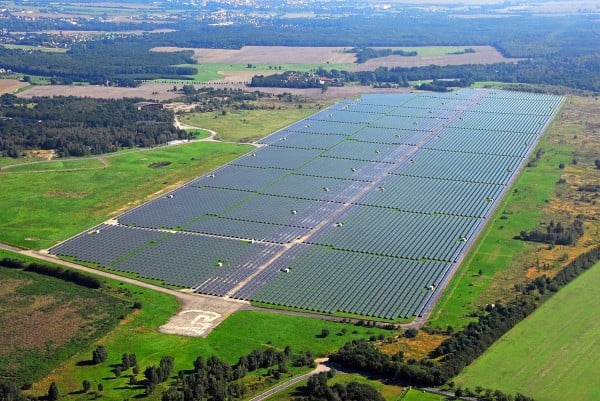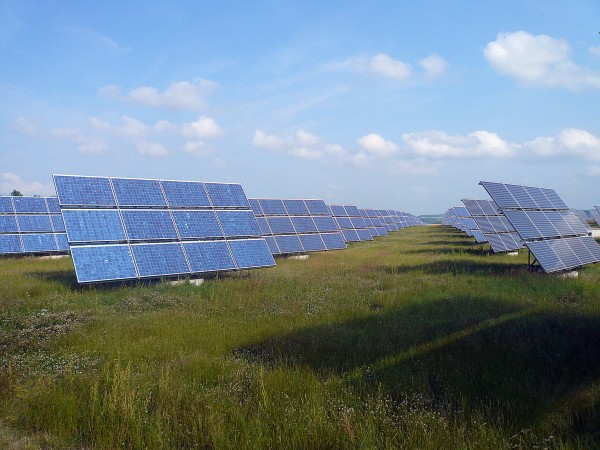Germany and the United States soccer teams face off today in what is sure to be an epic World Cup battle in Brazil (the US soccer coach led West Germany to a 1990 World Cup title). However, we think there is another arena where the two countries could duke it out- solar energy use. Both Germany and the United States boast a hefty list of solar projects. But we all know there can only be one winner. (Except of course when the US just ties Portugal 2-2). Read through each country’s solar portfolio below before we reveal the winner of the Germany v. US solar match.
US Solar Projects
In the US, there are more than 500 solar projects representing more than 32 GW of capacity, according to the Solar Energy Industries Association. And it is growing. By how much you ask? Oh just 418 percent in the past four years. We’d consider that a GOALLLL! Here are some of our favorite major projects below.
Put Solar On It
Solar Mosaic is one of the companies leading the solar revolution in the U.S. The company has partnered with dozens of other organizations to provide people in every state the tools they need to install solar panels on buildings in their communities. The project, called Put Solar on It, has already garnered a lot of attention.
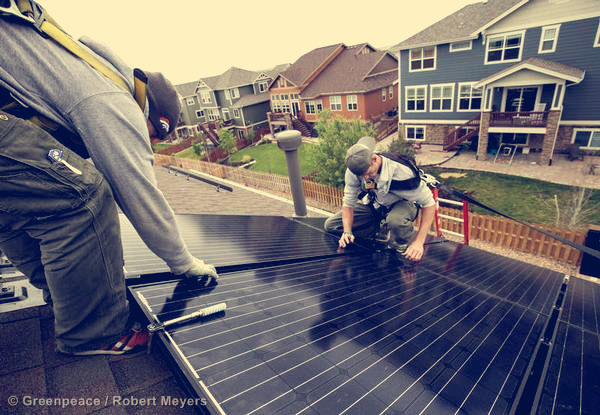
Namaste solar installers Josh Ford and Jed Brunk on a rooftop in Aurora, CO during a photo voltaic system installation.
Lancaster: The Solar Capital of the Universe
There can be no arguing that a combination of renewable-friendly legislation, technological and innovative knowhow, sunny cities, and a history of leading paradigm shifts makes California the capital of the solar revolution. But one mayor in California will only be satisfied when his town is recognized as the solar capital of the universe. Rep. Rex Parris is pushing to make the desert city of Lancaster the first city that produces more electricity from solar energy than it consumes on a daily basis. Among the ways hes achieving that goal is by mandating that every new home be equipped with solar panels or their equivalent. More power to him.
Solar Gardens
Not everybody is able to put photovoltaic panels on their homes. They might live in a cloudy part of town, or they may not own their properties. But one type of legislation makes it possible for those people to buy into shared solar systems, conventionally known as solar gardens and have a portion of the energy produced sent to their homes. Its pretty convenient. Colorado is among the states leading the charge toward solar gardens, but frustratingly, some states have defeated legislation that would make it possible.
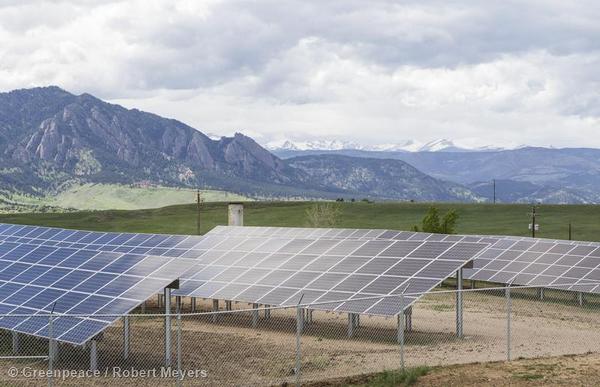
The 500-kilowatt Boulder Cowdery Meadows Solar Array, the first community solar garden to launch in Xcel Energy’s Colorado service area since the passage of a law in 2010 permitting them.
Apple doing it right
Tech giant Apple has made good on a few big time solar investments. It powers its entire iCloud with two massive solar farms in North Carolina, and its data centers in Nevada are set to be powered by solar as well. It is very close to having 100 percent of its energy powered by renewables. In 2010, it was only at 35 percent.
Solarize!
It may not be known for being the sunniest place in the world, but Portland is definitely one of the leading American cities in the race to go solar. Among the citys great contributions to the national renewables transition is Solarize, which was originally led by neighborhood assoications to buy solar panels in quantity and make them available to residents at low cost. Solarize initiatives have spread to cities and states across the U.S. Greenpeace has supported Solarize Charlotte in North Carolina, the heart of anti-solar Duke Energy and ALEC obstruction. Solaraize Charlotte has already mobilized hundreds of people.
Gainesvilles feed-in tariff
Cities or states can elect to pay owners of solar panels when they feed excess energy from their panels back into the grid. The policy, known as a feed-in tariff, made Gainesville, Florida one of the world leaders in per capita solar installations. It also produced revenue for suppliers with a lot of roof space, like city schools and libraries. Unfortunately, because of controversy (some of it trumped up) that the feed in tariffs were no longer paying off for the city, Gainesville is granting no contracts in 2014. But still, in a state that has been pretty bad at converting to renewables (despite ample sunshine), that city stands out.
NY Sun
This year, Governor Cuomo of New York committed about $1 billion to sweeping market-based solar programs across the state. His stated hope is to modernize the states grid and create a solar marketplace by promoting business, including a successful bid to lure Elon Musks Solar City manufacturing operations. Already, the state hosts more than 400 solar companies, providing over 5,000 skilled jobs to New Yorkers.
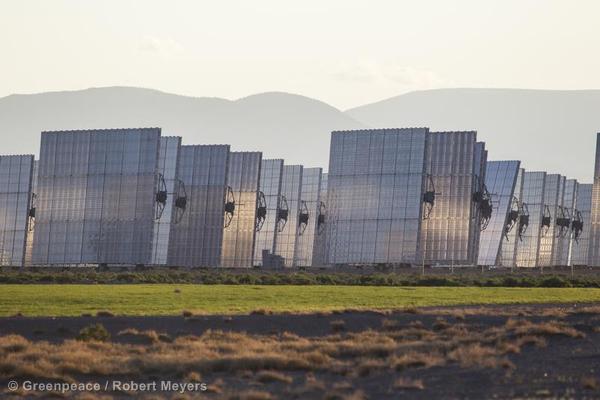
Alamosa Solar Generating Plant, a 30 megawatt concentrating photovoltaic power plant near Alamosa, CO.
Mapping rooftops
Theres the great tool by Sustainable CUNY called the NYC Solar Map, that provides info on just about all of the rooftop solar installed in the city, with testimonials by owners and assistance for people who want to do the same (its pretty cool to play around with). The map is super detailed and shows that 2/3 of the rooftops in Gotham are suitable for solar. If that happened, it would double the entire solar output of the United States and meet half of the citys peak demand.
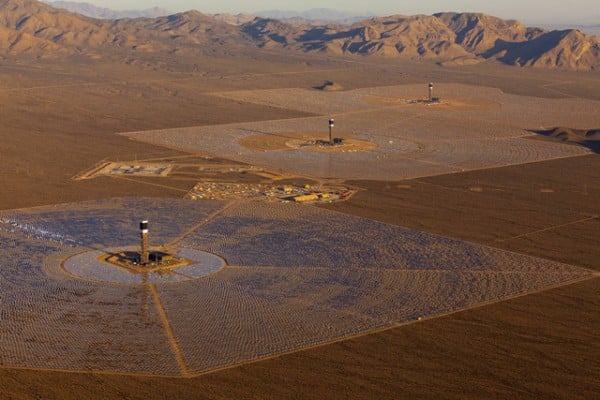
Ivanpah Solar Electric Generating Facility in California. It spans across 5 square kilometers and fostered jobs and innovation, but it has also faced criticism.
German Solar Projects
Okay, Germany is kind of killing it when it comes to solar energy. The country has a goal of electricity coming from 100 percent renewable sources by 2050. They are well on their way with this impressive list of major solar projects.
Senftenberg Solarpark
This solarphotovoltaicpower plant used to open-pit mining areas that were closed off limits to the city of Senftenberg! The first phase of the plant opened in 2011 and generates power for about 25,000 households.
Finsterwalde Solar Park
Located in the town ofFinsterwalde, this is one of the world’s largest photovoltaic plants.
Lieberose Photovoltaic Park
TheLieberose Photovoltaic Parkis is another major solar photovoltaic plant with 900,000 solar panels in Brandenburg, Germany. IT supplies power to 15,000 households.
Strasskirchen Solar Park
Located in Bavaria, this is another one of the world’s largestphotovoltaic plant that has been in commission since 2009.
Waldpolenz Solar Park
This park is one of the largest thin-film photovoltaic plants and was once a military base. It’s been providing power since 2008supplying aboutwhich supply about 40,000MWh of electricity per year.
Kthen Solar Park
Also built on a former military base, this park was connected to the grid in 2009.It has a capacity of 45MWp and an annual output of 42GWh.

